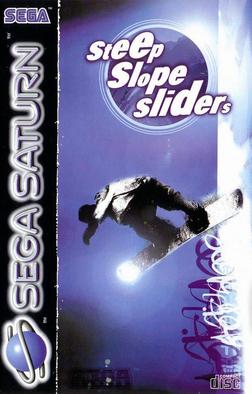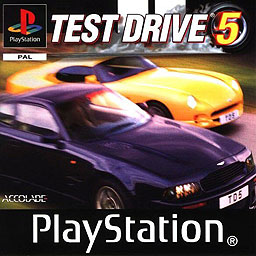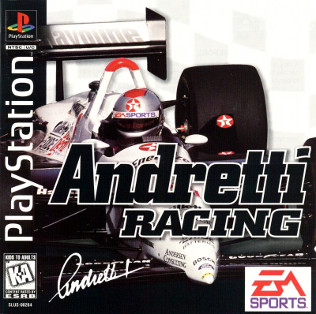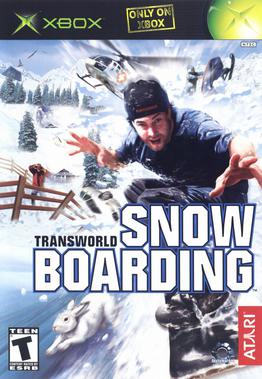
1080° Snowboarding is a snowboarding video game developed and published by Nintendo for the Nintendo 64 in 1998. In the game, the player controls one of five snowboarders from a third-person perspective, using a combination of buttons to jump and perform tricks over eight levels.

Starlancer is a space-based science fiction flight simulator computer game, created by Erin and Chris Roberts, and developed by Warthog Games under the auspices of Digital Anvil.

4x4 Evo is a video game developed by Terminal Reality for the Windows, Macintosh, Sega Dreamcast, and PlayStation 2 platforms. It is one of the first console games to have cross-platform online play where Dreamcast, Macintosh, and Windows versions of the game appear online at the same time. The game can use maps created by users to download onto a hard drive as well as a Dreamcast VMU. All versions of the game are similar in quality and gameplay although the online systems feature a mode to customize the players' own truck and use it online. The game is still online-capable on all systems except for PlayStation 2. This was Terminal Reality's only video game to be released for the Dreamcast.

Steep Slope Sliders is a game that was made for the Sega Saturn and Sega Titan ST-V arcade system, published in 1997. It was developed by a collaboration of Victor Interactive Software, and the Cave Company. The game was released by Victor Interactive Software in Japan and by Sega in other territories. Capcom released the arcade version. The game was met with positive reviews, drawing favorable comparison to other snowboarding video games for its sharp graphics, innovative design, and intuitive control system.

TrickStyle is a futuristic racing video game developed by Criterion Games and published by Acclaim Entertainment for the Dreamcast and Microsoft Windows. Set in the future, the player takes part in stunt-filled hoverboard races through London, Tokyo, and Manhattan, or inside a massive arena called the Velodrome. AirBlade by Criterion and Namco is a spiritual successor. The game received mixed reviews from critics, who praised its graphics and physics, but criticized its gameplay, animations and sound.

Cool Boarders is a snowboarding video game developed by UEP Systems for the PlayStation.

Dark Summit is a 2001 snowboarding video game developed by Radical Entertainment and published by THQ. It was released for the GameCube, PlayStation 2 and Xbox,

Mat Hoffman's Pro BMX is a BMX video game endorsed by Mat Hoffman and the first game to be published by Activision under the Activision O2 label. It is similar to the Tony Hawk's series and competed directly with Acclaim Entertainment's Dave Mirra Freestyle BMX. Despite a planned release in fall of 2000, the game was released in 2001 for the PlayStation and Game Boy Color, followed by Dreamcast, Microsoft Windows and Game Boy Advance.

NHL 2002 is a video game released by EA Sports in 2001. It is the predecessor to NHL 2003. The game's cover man is Pittsburgh Penguins superstar and owner Mario Lemieux, who had just made a comeback after being retired for three and a half years. It was the first installment of the NHL series to be released on Xbox.

NHL 2001 is a video game released by Electronic Arts in 2000. It is the successor to NHL 2000. An add-on featuring Elitserien and SM-Liiga was released on the PC version on March 8, 2001, that added Swedish and Finnish hockey leagues and teams to the game. It is the tenth installment of the NHL series, the final to be released on PlayStation, and the first to be released on PlayStation 2.

Cool Boarders 2 is a snowboarding video game developed by UEP Systems for the PlayStation. The game builds upon its predecessor's features with the addition of trick competitions, computer-controlled competitors, and support for the PlayStation Link Cable, allowing two-player, non-split screen multiplayer.

Cool Boarders 3 is a snowboarding video game developed by Idol Minds for the PlayStation.

Test Drive 5 is a racing game developed by Pitbull Syndicate and published by Accolade for PlayStation and Microsoft Windows in 1998.

Cool Boarders 2001 is a snowboarding video game developed by Idol Minds and published by Sony Computer Entertainment for the PlayStation and PlayStation 2. It is the only Cool Boarders title to be released only in North America.

The Dukes of Hazzard: Racing for Home is a racing video game published by SouthPeak Interactive that was released for the PlayStation in 1999. The game was later released for Game Boy Color and Microsoft Windows in 2000. It is based on the television show, The Dukes of Hazzard. Waylon Jennings, James Best, Ben Jones, Sonny Shroyer, and Tom Wopat reprised their characters by providing their voices to the PC and PlayStation versions of the game. A sequel titled The Dukes of Hazzard II: Daisy Dukes It Out was released in 2000.

Andretti Racing is a video game developed by American studios High Score Productions and Stormfront Studios and published by EA Sports for the PlayStation and Sega Saturn in 1996, and for Windows in 1997. The game's title refers to legendary racing drivers Mario Andretti and Michael Andretti.

Transworld Snowboarding is a snowboarding video game developed by Housemarque and published by Infogrames, released in 2002, for the Xbox. It is a sequel to Supreme Snowboarding.

Q*bert is a remake of the 1982 arcade game of the same name with 3D graphics. It was developed by Artech Studios and released by Hasbro Interactive on the PlayStation and Microsoft Windows in 1999, on the Dreamcast in 2000, and on Mac OS in 2001.

FIFA 2001 is a football simulation video game and the sequel to FIFA 2000. It was succeeded by FIFA Football 2002. It features Paul Scholes on the UK cover and Ben Olsen on the North American cover. The game's Spanish cover features Gaizka Mendieta on it. It was released on 31 October 2000 for Microsoft Windows and PlayStation, and on 24 November 2000 for PlayStation 2 as a launch title in Europe. The PlayStation 2 version was originally slated for release in the U.S. on 7 November, before it was delayed to 28 November. A Game Boy Color version was planned but cancelled.

ESPN X-Games Pro Boarder, also known as X Games Pro Boarder, is a video game developed by Radical Entertainment and published by Electronic Arts and Sony Computer Entertainment Europe for the PlayStation and Windows in 1998.




















